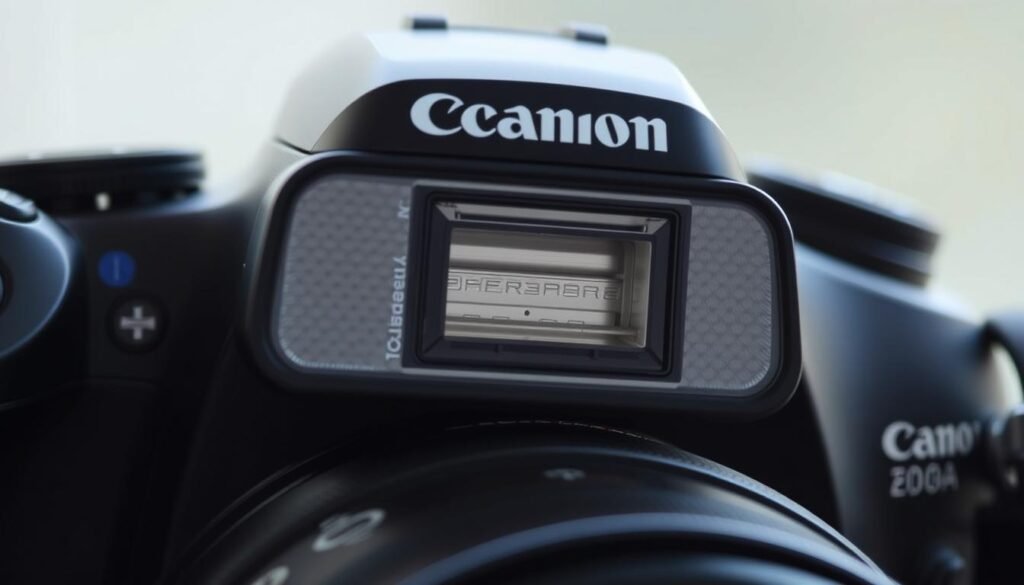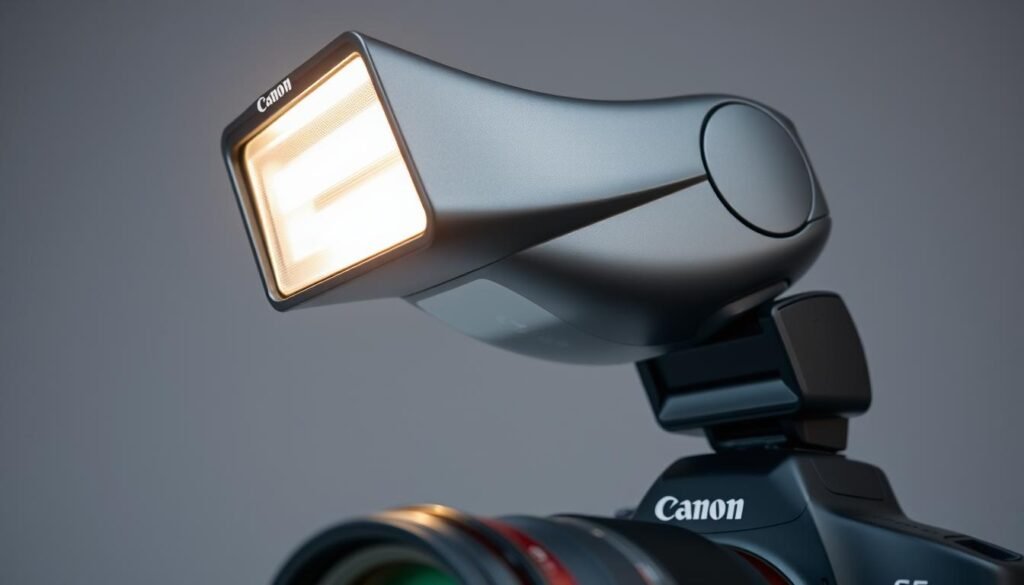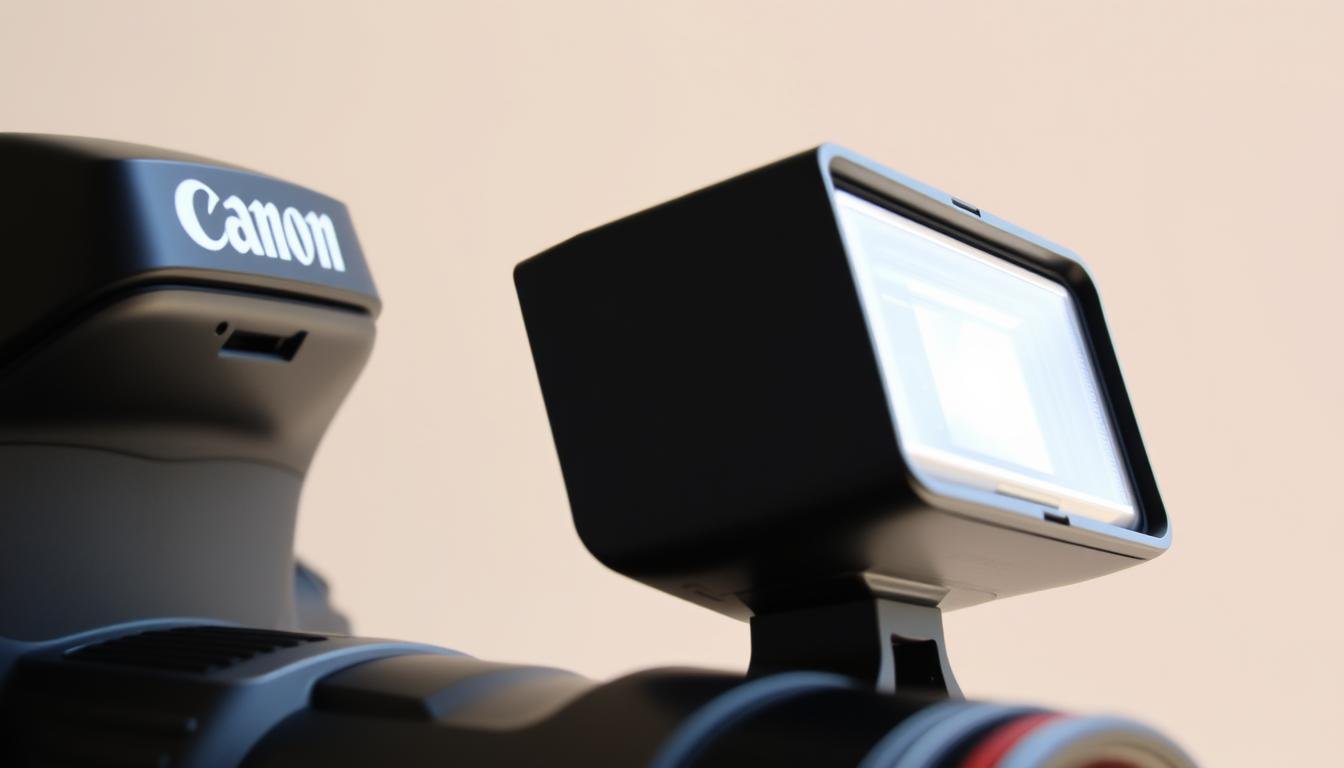Using a Canon camera means knowing about the flash. Turning off the flash is useful in some cases, so it’s important to understand how to do it. Disabling the flash is easy once you know the Canon camera settings.

Knowing how to turn off the flash can improve your photos. It’s good for both pros and beginners. Learning when to use the flash and when not to is key to great photos. let’s talk about How to Turn Flash off Canon Camera.
Key Takeaways
- Understanding the Canon camera flash is essential for capturing high-quality photos
- Turning off the flash can be beneficial in certain situations, such as low-light conditions
- Disabling the flash is a relatively simple process in the Canon camera settings
- Mastering the Canon camera settings can improve your photography skills
- Learning when to use and when to disable the flash is vital for capturing stunning photos
- The Canon camera flash can be adjusted according to the situation and the desired effect
Understanding Your Canon Camera’s Flash System
The Canon camera flash system is a powerful tool that can enhance your photography experience. You need to understand the difference between built-in flash and external flash units to get the most out of it. The built-in flash is a convenient feature that allows you to take photos with a flash without having to carry an extra device. On the other hand, external flash units offer more flexibility and power, making them ideal for professional photographers.
Canon cameras offer a range of flash modes, including auto, manual, and slow-sync flash. Each mode is designed to cater to specific photography needs, and understanding its functions is crucial to capturing stunning images. For instance, auto flash is perfect for everyday photography, while manual flash gives you more control over the output.
Here are some key points to consider when using your Canon camera’s flash system:
- Use built-in flash for casual photography and external flash units for more complex shoots
- Experiment with different flash modes to find the one that suits your needs
- Consider the lighting conditions and adjust your flash settings accordingly

Understanding your Canon camera’s flash system, including built-in flash, external flash units, and flash modes, can take your photography to the next level. Whether you’re a professional or an amateur, mastering the flash system will help you capture stunning images that exceed your expectations.
How to Turn Flash Off Canon Camera: Basic Method
Follow a simple method to turn off the flash on your Canon camera. It works for most models. First, find the flash control button with a lightning bolt icon. Press it to cycle through modes until you see “off.”
You can also use the camera’s menu to disable the flash. Look for the flash settings option. Select it to see the flash modes. Choose “off” to turn off the flash. This method is easy for most Canon cameras, but check your manual for specific settings.
Turning off the flash is good in some situations. It’s useful in low light or with external lights. It helps avoid harsh light and produces more natural images.

- Locate the flash control button
- Press the button to cycle through the flash modes
- Select the “off” setting
- Alternatively, access the camera’s menu system and choose the “off” option
By following these steps, you can easily turn off the flash on your Canon camera. This lets you control your photography settings better.
Locating Flash Controls on Different Canon Models
Canon cameras have different flash control spots depending on the model. Whether you use a DSLR, mirrorless, or point-and-shoot, knowing where these controls are is key. It helps you control your flash photography better.
Canon cameras offer various flash control options. DSLRs usually have a flash button on top or the back. Mirrorless cameras might have flash controls or a special button in the menu. Point-and-shoots often have a single button or menu option for flash settings.
Flash Control Locations
- DSLR cameras: typically have a flash button located on the top or rear of the camera
- Mirrorless cameras: often have flash controls accessible through the camera’s menu system or via a dedicated button
- Point-and-shoot cameras: may have a single button or menu option to control flash settings
Knowing where your Canon camera’s flash controls are is the first step to mastering flash photography. It helps you take amazing photos with your DSLR, mirrorless, or point-and-shoot camera.
Disabling Flash in Automatic Mode
When using your Canon camera in automatic mode, the flash might be on by default. You must go into the camera’s menu to turn off the flash. The steps can change based on your Canon camera model, but you’ll usually find the flash settings in the menu.
Look for the flash or lighting section. Then, pick the option to disable the flash.
Disabling the flash in automatic mode is easy. The flash settings are in the camera’s menu or on the LCD screen. Just choose the option to turn off the flash. This way, you can take photos without the flash, even in dim light.
Here are the general steps to disable flash in automatic mode:
- Access the camera’s menu system
- Look for the flash or lighting section
- Select the option to turn off the flash
- Save your changes to the Canon camera settings
Managing Flash Settings in Manual Mode
Using your Canon camera in manual mode gives you more control over flash settings, allowing you to be more creative and flexible in your photos. You can adjust these settings through the menu, quick control panel, or custom functions.
In manual mode, you can tweak flash settings as needed. For instance, you can turn the flash on or off or change its intensity using the menu settings. The quick control panel makes it easy to adjust these settings quickly.
You can also customize flash settings with custom function settings. These settings let you sync the flash with the camera’s shutter or adjust its output based on lighting.
- Access the menu settings to adjust flash settings
- Use the quick control panel for easy access to Flash settings
- Customize function settings to tailor flash settings to your needs
Mastering flash settings in manual mode can elevate your photography. It’s crucial whether you’re shooting in a studio or outdoors. Being able to control the flash can significantly improve your photo quality.
Alternative Methods for Flash Control
There are many ways to control the flash on your Canon camera. One is using external flash units. These units offer more power and flexibility than the built-in flash. Adjusting your Canon camera settings can help you use external flash units better.
Flash diffusers are another option. They soften the flashlight, reducing harsh shadows and improving your photo’s quality. Using flash diffusers with the right
Other methods include bounce flash and flash brackets. Bounce flash directs light at surfaces like ceilings or walls, while flash brackets let you place the flash off-camera. These can add creative lighting effects to your photos.
Exploring these methods can enhance your photography. The goal is to experiment whether you use external flash units, diffusers, or other accessories. Find what works best for you and your Canon camera settings.
Troubleshooting Common Flash Issues
When using your Canon camera, you might face flash problems. These can include the flash not turning off or the flash symbol blinking. Knowing how to troubleshoot and adjust your Canon camera settings is key to fixing these flash issues.
Some common flash problems are the flash not turning off when disabled or the flash symbol blinking non-stop. First, check your Canon camera settings to ensure the flash is off. If the issue continues, resetting your camera settings to their defaults might help.
- Check for firmware updates for your Canon camera
- Consult your camera’s user manual for specific troubleshooting guides
- Reset your camera settings to their default values
Following these steps and adjusting your Canon camera settings can resolve common flash issues, ultimately enhancing your photography skills. Always consult your camera’s manual for detailed troubleshooting and stay up to date with firmware updates.
Best Practices for Flash-Free Photography
Natural light is usually the best choice for taking photos. But you need to change your camera settings when it’s low light. Here are some tips for great flash-free photography.
A tripod stops the camera from shaking and blurs in low light. Also, upping the ISO and tweaking the aperture can improve your photos. For example, a smaller aperture (like f/2.8) lets in more light, making your photos brighter and more alive.
To get better at flash-free photography, try natural light tricks. Shoot near a window or use reflectors to bounce light. With these methods and the right camera settings, you can take amazing photos even in low light.
- Use a tripod to prevent camera shake and blur
- Adjust the aperture and ISO sensitivity for optimal results
- Experiment with natural light techniques, such as shooting near a window or using reflectors
FAQ
What is the built-in flash on a Canon camera?
The built-in flash on a Canon camera is a small, integrated unit. It’s part of the camera body. It adds light when taking photos in dim conditions.
What are the different types of flash modes on a Canon camera?
Canon cameras have several flash modes: Auto, Red-eye Reduction, Slow Sync, and Manual. Each mode lets you control the flash to fit your needs.
When should I use flash photography on my Canon camera?
Use flash in low-light situations, like indoor events or nighttime shots. It adds light. But, avoid it for natural scenes or to set a mood in your photos.
How do I locate the flash controls on my Canon camera?
Flash controls vary by Canon camera model. DSLR cameras use the menu or a button. Mirrorless and point-and-shoot cameras have settings in their menus.
How do I turn off the flash on my Canon camera in automatic mode?
To disable the flash in auto mode, go to your camera’s menu, find the flash settings, and turn them off. This will stop the flash from firing.
How do I manage the flash settings on my Canon camera in manual mode?
In manual mode, you control the flash settings. Use the menu, quick control panel, or custom functions. Adjust the output, sync speed, and more.
What are some alternative methods for controlling the flash on my Canon camera?
Besides the built-in flash, you can use external units, diffusers, or accessories. These options offer more control and creativity in your flash photography.
How do I troubleshoot common flash issues on my Canon camera?
For flash problems, like it not turning off or a blinking symbol, try resetting the camera. Also, check for firmware updates.
What are some best practices for taking photos without the flash on my Canon camera?
For flash-free photos, adjust your camera settings for low light. Use natural light and accessories like reflectors or tripods to enhance your photos.
Conclusion
As we wrap up this guide on turning off the flash on your Canon camera, remember that true photography skill often comes from capturing moments without artificial light. By learning to work with low and natural light, you can make amazing, flash-free photos with your Canon camera. These photos will truly show off your creative side.
Whether shooting in dim places or during the golden hour, trying different camera settings and finding new light sources can be exciting. It opens up a whole new world of turning off flash options. Be brave, stay calm, and let your creativity lead you to the perfect conclusion of your photography journey.
As a tech writer specializing in gadget apps and software, my mission is to make complex technical details accessible and engaging, helping users navigate modern technology with confidence, from early adopters to everyday consumers.
I focus on creating clear and concise documentation, tutorials, and articles that demystify how apps and software integrate with gadgets to enhance daily life. Whether it’s breaking down the features of a smart home app, exploring the latest mobile software updates, or providing troubleshooting guides for wearable tech, I aim to make the user experience seamless and enjoyable.
Writing is more than conveying information; it fosters understanding and connection. By simplifying gadgets, apps, and software, I empower users to use technology for productivity, entertainment, and innovation in their daily lives.


1 thought on “How to Turn Flash off Canon Camera?”